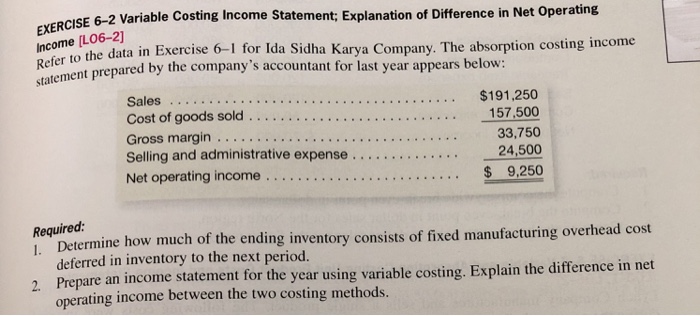Content

NPV is the current value of the sum of outflows and inflows of an investment divided by the discount rate plus one over time. To determine the viability of an investment or capital project. If the NPV of an investment is positive, meaning it’s expected to make a profit, it’s worth consideration. Net present value is an economic measure that adds all potential outflows and inflows of an investment in today’s dollars. This means what you want to earn on an investment is exactly equal to what the investment’s cash flows actually yield , and therefore value is equal to cost. Notice that when the discount rate is lower than the internal rate of return, our NPV is positive .
NINE ALLIANCE SCIENCE & TECHNOLOGY GROUP : MANAGEMENT’S DISCUSSION AND ANALYSIS OF FINANCIAL CONDITION AND RESULTS OF OPERATIONS. (form 10-Q) – Marketscreener.com
NINE ALLIANCE SCIENCE & TECHNOLOGY GROUP : MANAGEMENT’S DISCUSSION AND ANALYSIS OF FINANCIAL CONDITION AND RESULTS OF OPERATIONS. (form 10-Q).
Posted: Mon, 30 Jan 2023 20:35:04 GMT [source]
Explain in simplistic terms for the financially challenged mind. Identify and describe a technique to compute equity value only using accounting variables. Can the net present value method of Net Present Value Rule Definition evaluating projects identify the one that will maximize wealth? Learn about what net present value is, how it is calculated both for a lump sum and for a stream of income over multiple years.
Capital Budgeting
When you are evaluating two capital investment projects, you have to evaluate whether they are independent or mutually exclusive and make an accept-or-reject decision with that in mind. The internal rate of return is the annual rate of return a potential project is expected to generate. IRR is calculated by setting the NPV in the above equation to zero and solving for the rate “r.” The initial investment required to launch the project is the first term in this equation, and it’s negative since it represents an outlay of money. Let’s take another example of calculating NPV using the same set of cash flows, except with a different discount rate. If the project has returns for five years, you calculate this figure for each of those five years.

The alternative format used for calculating the NPV is shown as follows. Note that the NPV here is identical to the NPV calculated previously in part 2. Where 20 years ago a monthly salary was 2,500 guilders, this monthly payment is now made in euro’s, whilst the euro had more than twice the value of guilders back then.
Net Present Value Discount Rate
IRR analysis differs in that it considers only the cash flows for each period and disregards the initial investment. Additionally, the result is derived by solving for the discount rate, rather than plugging in an estimated rate as with the NPV formula. In some cases, especially for short-term projects, simpler methods of evaluation make sense.
- It is widely used throughout economics, financial analysis, and financial accounting.
- Imagine a company can invest in equipment that would cost $1 million and is expected to generate $25,000 a month in revenue for five years.
- The discount rate is what you would like to earn, the IRR is what you actually earn, and the NPV quantifies the difference.
- When choosing between competing investments using the net present value calculation you should select the one with the highest present value.
- To see a percentage gain relative to the investments for the project, usually, Internal rate of return or other efficiency measures are used as a complement to NPV.
- What is the decision rule for the internal rate of return technique?
If the NPV is a positive value, a viable investment is indicated. Draw the NPV profile for projects A and B and determine which project is better assuming a cost of capital of 5%. Toyota wants to set up one new plant for expansion of current business, so they want to check the feasibility of the project.
Definition and Examples of Capital Budgeting
When considering the NPV of several comparable investments, the one with the highest NPV should generally be undertaken. Volatility profiles based on trailing-three-year calculations of the standard deviation of service investment returns.
- To calculate NPV, subtract today’s discounted value of all expected future returns from today’s value of all expected investments.
- Intuitively, if you had the $100 today, you could invest the money for one year and have more than $100.
- When analyzing projects in a capital constrained environment, it may be appropriate to use the reinvestment rate rather than the firm’s weighted average cost of capital as the discount factor.
- As shown above, the investment project with the highest profitability index is project B, followed by project C, and then A.
- Management views the equipment and securities as comparable investment risks.
IRR is also more useful than NPV for evaluating projects of different sizes. The NPV formula calculates the present value of all cash inflows and the present value of all cash outflows. Since the cash inflows are positive and the cash outflows are negative, these inflows and outflows offset each other and the resulting difference is the NPV. For simplicity, assume the company will have no outgoing cash flows after the initial 100,000 cost. This also makes the simplifying assumption that the net cash received or paid is lumped into a single transaction occurring on the last day of each year. At the end of the 12 years the product no longer provides any cash flow and is discontinued without any additional costs. Using variable rates over time, or discounting “guaranteed” cash flows differently from “at risk” cash flows, may be a superior methodology but is seldom used in practice.
Typically you should use either the weighted average cost of capital for the company or the rate of return on alternative https://online-accounting.net/ investments. As a rule the higher the discount rate the lower the net present value with everything else being equal.
- Net Present Value means the discounted value of a cash flow.
- At face value, it’s easy to assume Project B would be better because it has a higher NPV, meaning it’s more profitable.
- In some cases, we receive a commission from our partners, however, our opinions are our own.
- An investment’s rate of return can change significantly over time.
- Projects with IRRs above the required rate of return are generally considered attractive opportunities.
The 5% rate of return might be worthwhile if comparable investments of equal risk offered less over the same period. NPV is the result of calculations that find the current value of a future stream of payments, using the proper discount rate. In general, projects with a positive NPV are worth undertaking while those with a negative NPV are not. A hurdle rate is the minimum rate of return on a project or investment required by a manager or investor. The internal rate of return rule is a guideline for evaluating whether a project or investment is worth pursuing. The internal rate of return is a metric used in capital budgeting to estimate the return of potential investments. Generally, if a company cannot find a positive NPV project, it should return the capital to shareholders via a dividend or a share repurchase.
To calculate NPV, you need to estimate the timing and amount of future cash flows and pick a discount rate equal to the minimum acceptable rate of return. The NPV method provides straightforward criteria for choosing or rejecting investment projects. Projects with positive NPVs qualify for selection because their benefits, in terms of target rates of returns, exceed costs. Investments yield zero NPV when they have equal benefits and costs.
